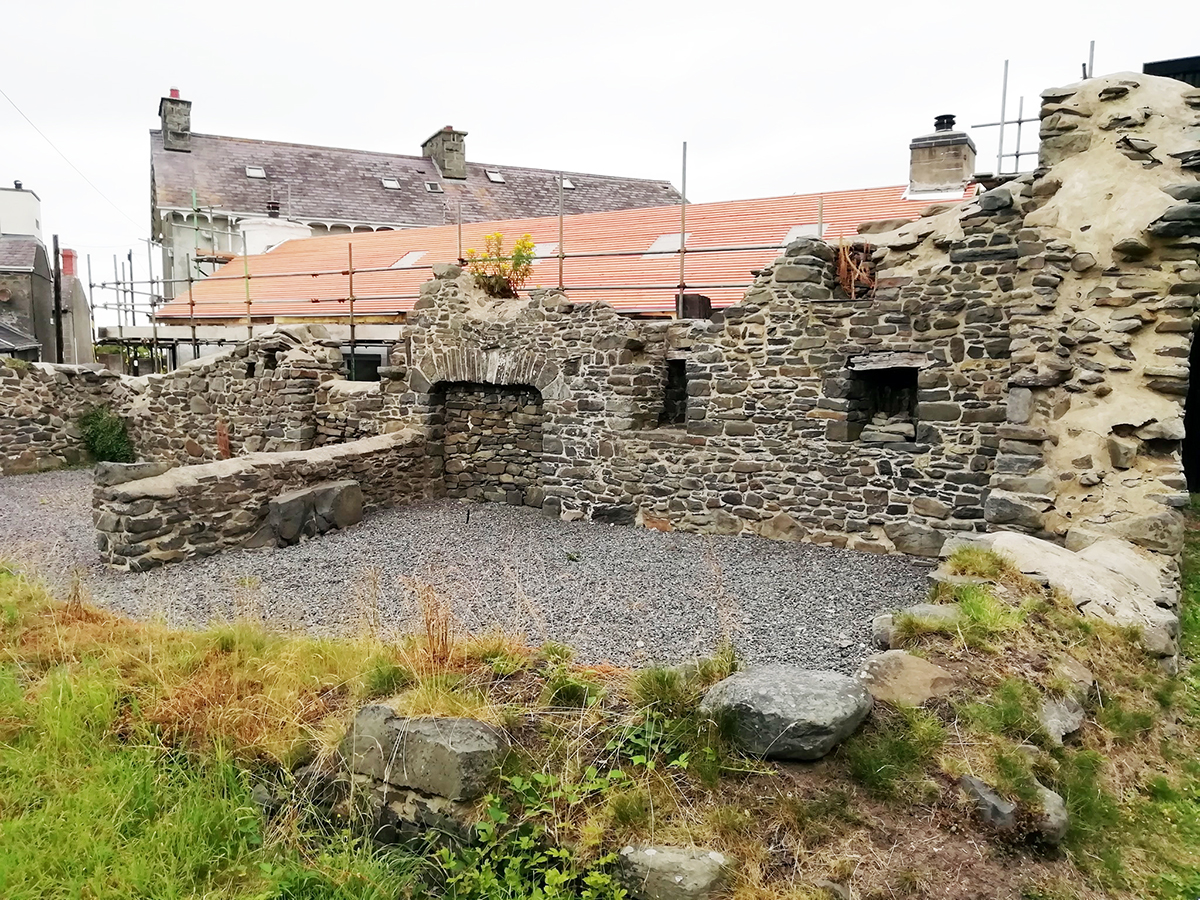Llanon History
Llanon history, archaeology and antiquities. Is a historic village in Ceredigion, formerly Cardiganshire, West Wales. Situated on the Cardigan Bay coastline, between Llanrhystud and Aberarth. Towards the sea you find the historic hamlet of Llansanffraid.
Table of Contents
1. Local History
2. Journal Index
3. Illustrations and Old Pictures
4. Schools and Education
5. Industry and Trades
6. Ships, Shipbuilding and Martime History
7. Churches, Chapels and Religion
8. Location Map
9. Gallery
10. References
11. Links
| History of Llanon |
|---|
 Llanon Museum Cottage is a rare example of a typical 18th century Ceredigion cottage. |
| County: Ceredigion Community: Llanon Traditional County: Cardiganshire Map Reference SN56NW Grid Reference SN5155367025 |
| Medieval Parish Cantref: Uwch Aeron Commote: Anhuniog |
| Ecclesiastical Parish: Llansantffraid, Acres 4888.814 Parish Hundred: Ilar |
| Electoral Ward: Llansantffraed |
| Listed Buildings: Llanon Scheduled Monuments: Llanon |
 The Hall, Llanon, a 16th century building. Also the earliest known example of a chimneyed house in Ceredigion. |
Since 1909 the Ceredigion Historical Society has published articles written about the archaeology, antiquities and history of Ceredigion, many of the articles are about Llanon history.
1. Local History
Llanon Museum Cottage is a rare example of a typical 18th century Ceredigion cottage.
The Hall (Y Neuadd), is thought to be Tudor in date from around the 16th century.
2. Journal Index
- Llan-non, ili:129,1 1,153
- blacksmith, vi:99,100
- dialect
- see Llan-non : tafodiaeth
- emigration
- see Llan-non : ymfudo
- fair, iii:127;ix:369
- fulling mill, vi:108
- Rebecca riots at, v-.270
- St. Non’s church, iii:126,130
- schools
- grammar, ix:199
- private, ii:151
- settlement patterns, x:115-16
- smuggling, iv-.332
- tafodiaeth, ix:181,182,183,184
- turnpike gate, iii:130,134
- woollen mill, vi:111
- ymfudo, ii:167,229
- Llan-non, gwestfa, iii:274

3. Illustrations and Old Pictures
- Hafodydd and Lluestydd above Llan-non, 1846, ix:22fig. 11
- Llan-non. A traditional Cardiganshire cottage in, viii:323 fig.5
4. Schools and Education
- schools
- grammar, ix:199
- private, ii:151
5. Industry and Trades
- blacksmith, vi:99,100
- fulling mill, vi:108
- woollen mill, vi:111
6. Ships, Shipbuilding and Martime History
- smuggling, iv-.332
7. Churches, Chapels and Religion
- St. Non’s church, iii:126,130
8. Location Map
9. Gallery







Some ideas to share your Stories below!
Have a memory and your not sure what to write? We have made it easy with some prompts and ideas, just think about this place and the importance its had in your life and ask yourself:
- What are my personal memories of living here?
- How has it developed and shops changed over the years?
- Do you have a story about the beach, community, its people and history?
- Tell us how it feels, seeing photographs and images of this place again?
- Tell us your favourite memories about this place?
The aim of the Ceredigion Historical Society is to preserve, record and promote the study of the archaeology, antiquities and history of Ceredigion. That objective has remained the same since the foundation of the Society in 1909, though its name was changed from Ceredigion Antiquarian Society to the Ceredigion Historical Society in 2002.
10. References
- Llanon map (Header): Reproduced under a Creative Commons Attribution-NonCommercial-ShareAlike 4.0 International (CC-BY-NC-SA) licence with the permission of the National Library of Scotland.
- View: Llanon Historic Mapping
11. External links
- Llansantffraed History Society, founded in 1996, meetings are held in the Llanon Reading Room on the first Monday of the month except for Bank Holiday’s.
- Coflein, discover the archaeology, historic buildings and monuments of Llanon
- Historic Place Names, learn about the field names and house names in the community of Llanon
- A Pint of History, read about the history of Ceredigion pub’s, inn’s and local taverns of Llanon
- People’s Collection Wales, share your stories, memories and photographs of Llanon










Please share your memories of the village and any local history facts about the village of Llanon, that may be of interest to others!
LOCAL TRADITIONS, Etc.
(p324)
“LLANON (CARDIGANSHIRE).
Non was the mother of St. David. The Vicar, Mr. Lewis, informed me that there is a tradition in the neighbourhood that the Patron Saint was born here, and owned much land here, including all the flats known as Morfa Esgob—The Bishop’s March. It is said that St. David divided the land into small portions which he gave to the fishermen of the place. There was a stone on the exterior wall of the ruins of St. Non’s Chapel, on which was carved the face of a woman with a child in her arms, traditionally reputed to be that of Non and her child David. There is also a tradition that the Saint was educated at Henfynyw. See more about this in Mr. Eyre Evans’ interesting book on the Antiquities of Cardiganshire.
Some three miles from Llanon, says Mr. Horsfall-Turner in his “Wanderings in Cardiganshire,” legends have been busy with a huge stone pillar which marks, perhaps the grave of some long-forgotten hero. “During the building of Devil’s Bridge, we are told, his Satanic majesty wished to employ this monolith and carried it away, his finger marks may still be seen—leaving another impression. He sat so long and thought so deeply, that at the crowing of [326]the cock, he was startled and vanished so rapidly that the stone was so completely forgotten.””
From ‘Folk-Lore of West and Mid-Wales’ by J. Ceredig Davies (1911).